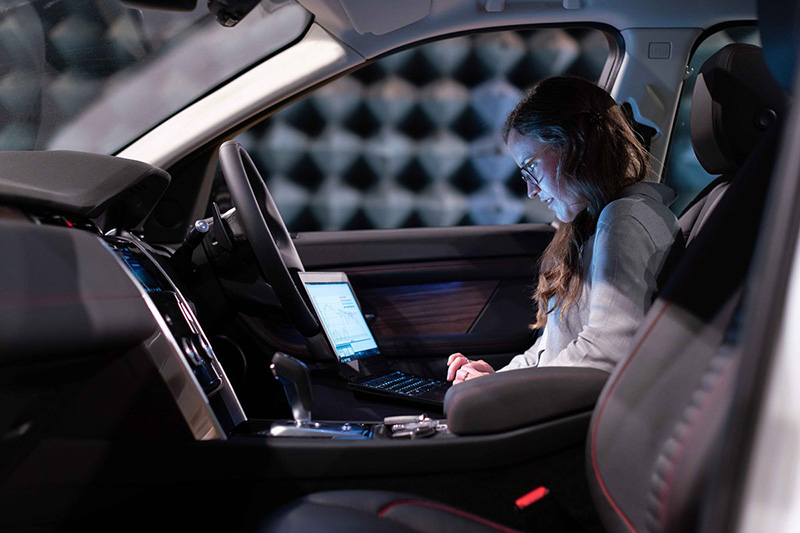01
Virtual Classroom:
In this workflow, the live stream captures a teacher or instructor delivering a lecture or conducting a class session. Students can join the live stream remotely and participate by asking questions, submitting assignments, and engaging in discussions through chat or other interactive tools.
- Interactive Tools: Utilize interactive tools such as chat, real-time quizzes, and collaborative whiteboards to facilitate engagement and participation among students during live lectures or class sessions.
- Recording and Playback: Provide the option to record live lectures, allowing students to review the content later or access it asynchronously if they couldn't attend the session in real-time.
- Breakout Rooms: Create virtual breakout rooms for group discussions or collaborative activities, enabling students to work together on projects or assignments.
02
Remote Guest Speakers:
This workflow involves inviting guest speakers or subject matter experts to deliver live presentations or workshops to students. The live stream enables students to interact with the guest speakers, ask questions, and gain valuable insights from outside the traditional classroom setting.
- Q&A Sessions: Enable students to ask questions directly to guest speakers during live presentations, fostering a dynamic learning experience and promoting knowledge sharing.
- Expert Insights: Offer students the opportunity to engage with industry professionals or subject matter experts, gaining valuable insights and real-world perspectives beyond what can be covered in traditional coursework.
- Networking Opportunities: Facilitate networking opportunities by allowing students to connect with guest speakers after the live session, potentially leading to internships, mentorship opportunities, or industry connections.

03
Events and Conferences:
Educational institutions often host events, conferences, or panel discussions. Live streaming these events allows remote participants, such as students or professionals unable to attend physically, to access and engage with the sessions in real-time. They can view keynote speeches, attend breakout sessions, and contribute to discussions through online platforms.
- Multi-Stream Support: Simultaneously stream different sessions or tracks happening at the event or conference, providing participants with options to choose the content that aligns with their interests or learning objectives.
- Online Interaction: Integrate live chat or discussion forums alongside the live stream, encouraging remote participants to engage with speakers and each other, ask questions, and share insights.
- Archiving and On-Demand Access: Archive the live stream recordings and make them available for on-demand viewing, ensuring that participants can access sessions they may have missed or revisit content at their convenience.
04
Lab Demonstrations:
For science or technical subjects, live streaming lab demonstrations can be beneficial. Students can observe experiments or demonstrations conducted by instructors or lab technicians, enabling them to gain practical knowledge even if they are not physically present in the lab.
- Multiple Camera Angles: Utilize multiple cameras or camera angles to capture different perspectives during lab demonstrations, enhancing the understanding of complex experiments or techniques.
- Live Interactions: Enable students to ask questions or request clarifications during the live lab demonstration, fostering active learning and a deeper comprehension of the subject matter.
- Supplementary Materials: Provide additional resources, such as handouts or links to related content, alongside the live stream to support student learning and reinforce the concepts presented in the lab.
05
Virtual Tours:
Educational institutions can use live streaming to provide virtual tours of their campus facilities, libraries, or specialized labs. This allows prospective students, parents, or distant learners to explore the institution remotely and get a sense of the learning environment.
- Guided Presentations: Have a host or guide navigate through the campus or facilities, providing insightful commentary and highlighting key features during the live virtual tour.
- Q&A and Information Sessions: Allow participants to ask questions in real-time during the virtual tour, addressing specific inquiries about campus life, facilities, or programs.
- Pre-recorded Segments: Incorporate pre-recorded segments, such as interviews with faculty or testimonials from current students, to provide a comprehensive overview of the educational institution.

06
Remote Tutoring and Office Hours:
Live streaming can be used for one-on-one or small group tutoring sessions. Students can join the live stream to receive personalized assistance, ask questions, or review course materials with their instructors.
- Scheduling and Appointment Systems: Implement an online scheduling system that allows students to book remote tutoring or office hour sessions with instructors, streamlining the process and ensuring availability.
- Screen Sharing and Document Collaboration: Utilize screen sharing and document collaboration tools to enhance remote tutoring sessions, enabling instructors to provide real-time feedback and guidance on assignments or coursework.
- Recording and Session Playback: Provide the option to record tutoring sessions, giving students the ability to review the session and reinforce their understanding of the topics discussed.
07
Student Presentations:
In this workflow, students can present their projects, research findings, or creative work via live streaming. This allows peers, instructors, and even external stakeholders to attend the presentations remotely and provide feedback or ask questions.
- Live Feedback and Discussion: Enable real-time feedback and discussion from peers, instructors, and external stakeholders during student presentations, fostering a supportive and collaborative environment.
- Audience Engagement Tools: Implement interactive features, such as live polling or Q&A sessions, to engage the audience and encourage active participation in student presentations.
- Presentation Recording and Sharing: Record and archive student presentations for future reference or sharing with others, allowing students to showcase their work beyond the live session and potentially receive feedback from a wider audience.
Each of these live streaming workflows enhances accessibility, engagement, and flexibility in educational settings. The specific workflows adopted may vary based on the institution's needs, technology infrastructure, and the subject matter being taught.


